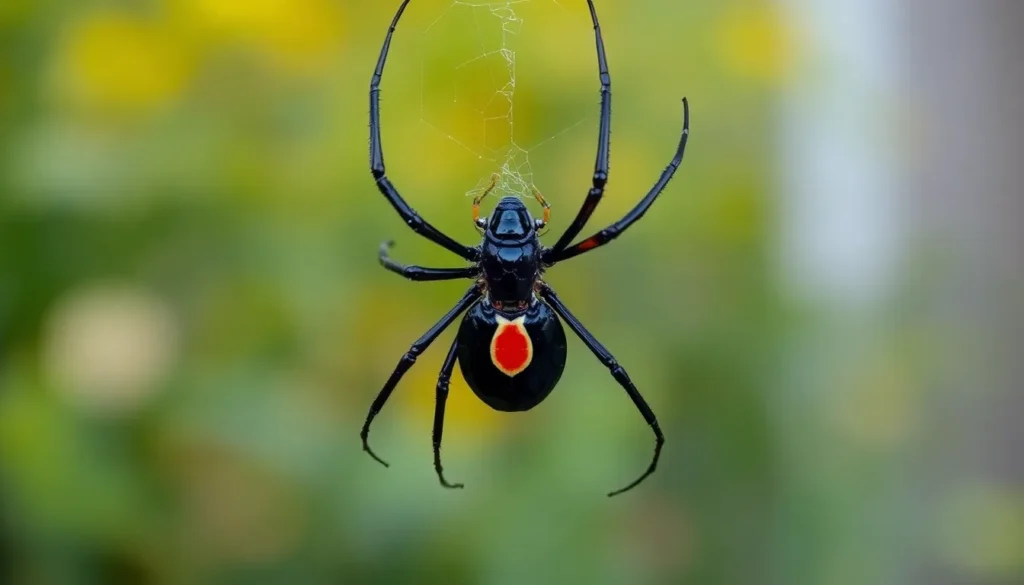Table of Contents
ToggleWhen it comes to creepy crawlies, the black widow spider tops the charts as the diva of danger. With its glossy black body and that infamous hourglass marking, it’s no wonder people wonder if a bite from this eight-legged femme fatale could send them to the great beyond. But before you start planning your dramatic exit, let’s unravel the truth behind this notorious arachnid.
Many folks fear the black widow’s bite as if it were a ticket to the afterlife. While it’s true that their venom packs a punch, the reality is a bit less theatrical. Most bites result in nothing more than a bad day—unless you’re one of the unlucky few. So, is it time to start fearing your backyard or just to watch where you step? Let’s dive into the facts and find out if this spider is really as deadly as its reputation suggests.
Understanding Black Widow Spiders
Black widow spiders possess a notorious reputation, characterized by their shiny black bodies and eye-catching hourglass markings. Knowledge of their descriptions and habitats aids in understanding these creatures.
Description and Characteristics
Black widow spiders exhibit a smooth, jet-black appearance, with females showcasing a prominent red hourglass shape on their abdomens. Males, smaller in size, often display lighter colors and fewer markings. Their legs extend long and slender, allowing for agile movement. Venom contains neurotoxins that affect the nervous system, causing pain and muscle spasms in victims. Most encounters with black widows remain harmless, with symptoms varying from mild discomfort to severe reactions, primarily in susceptible individuals. Their unique appearance and potent venom contribute to a widespread fear surrounding them.
Habitat and Distribution
Black widow spiders thrive in diverse environments across the United States, frequently found in secluded areas such as woodpiles, basements, and sheds. They prefer warm climates, establishing homes in rocky crevices and under debris. High population concentrations appear in the southern and western regions, where they adapt well to residential areas. While urban settings provide ample hiding spots, rural areas also host significant black widow populations. Ensuring awareness of their presence in various locations aids in prevention and safe interactions.
The Nature of Black Widow Bites

Black widow bites are notorious for their potent venom. Understanding their symptoms and immediate effects provides insight into their potential dangers.
Symptoms of a Black Widow Bite
Common symptoms of a black widow bite may include severe pain at the bite site, muscle spasms, and systemic issues. Individuals often experience nausea, sweating, and increased heart rate. Symptoms can vary based on the person’s age, health, and underlying conditions. Some people report localized swelling or redness, while others may feel general malaise. Each bite has the potential for a different reaction, depending on the individual’s sensitivity to the venom.
Immediate Effects on the Body
Immediate effects of a black widow bite typically manifest within a few hours. Initial symptoms often include sharp, sudden pain, which is frequently likened to a pinprick. Muscles near the bite site might tighten, leading to cramps. In certain cases, individuals experience trembling or weakness in their limbs. Moreover, anxiety and restlessness can occur as the body reacts to the neurotoxin. Recognizing these signs early on can be crucial for timely medical intervention.
Potential Fatalities and Risks
Understanding the potential risks associated with black widow bites is crucial for safety awareness. While fatalities are rare, particular groups may experience increased vulnerability.
Who Is at Risk?
Children, elderly individuals, and those with compromised immune systems face heightened risks from black widow bites. Young children under 5 years are especially delicate. Seniors over 65 often have weaker responses to venom. Individuals with pre-existing health issues, such as respiratory or cardiovascular conditions, might suffer more severe symptoms following a bite. Pregnant women also have increased susceptibility due to changes in their bodies. Prompt medical attention is vital for these at-risk groups to minimize complications.
Factors Influencing Severity
Severity of a black widow bite depends on several factors. Amount of venom injected plays a critical role; larger doses lead to more severe reactions. The individual’s age influences their response; younger and older individuals may react worse. Underlying health conditions like diabetes or heart disease increase the risk of severe symptoms. Location of the bite can also affect outcomes; bites in sensitive areas typically cause more pain. Access to timely medical care significantly reduces the likelihood of complications. These factors highlight the importance of awareness and proactive health management.
Treatment and Prevention
Understanding treatment options for black widow bites is essential for minimizing risks. Immediate action can significantly impact outcomes.
First Aid Steps for a Bite
Responding quickly to a black widow bite involves several important steps. First, immobilize the affected area to slow down venom spread. Next, apply a cool compress to relieve pain and swelling. Medical professionals recommend seeking help as soon as possible, especially if symptoms escalate. Administering pain relief like over-the-counter medications can help until medical assistance is received. If the bite occurs on a limb, elevating it aids in reducing swelling. Avoiding home remedies, such as alcohol or ice directly on the skin, can prevent further complications. Quick recognition and action enhance recovery chances.
Long-Term Health Considerations
Individuals who experience a black widow bite may face lingering health effects. Muscle spasms and pain sometimes persist beyond initial treatment, affecting daily activities. Medical evaluations can identify complications like infection or allergic reactions. Chronic pain is a possibility for some, requiring tailored rehabilitation approaches. Vulnerable groups, including children and the elderly, often exhibit increased sensitivity to the neurotoxin. Regular follow-ups with healthcare providers help monitor any long-term consequences. Supportive therapies may assist in managing symptoms effectively. Awareness of these health considerations encourages proactive health management post-bite, allowing for timely interventions.
Understanding the black widow spider and its bite is essential for anyone concerned about their safety. While the fear surrounding these spiders is often exaggerated, it’s crucial to recognize the potential risks they pose, especially to vulnerable populations. Awareness of symptoms and quick medical intervention can significantly reduce complications from a bite.
By taking preventive measures and knowing how to respond effectively, individuals can navigate encounters with black widows with confidence. Staying informed and prepared ensures that one can appreciate nature while minimizing any potential threats.







